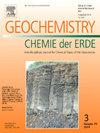In this study, we investigate the mineralogical and petrochemical characteristics of maskelynite occurring in a shocked basalt boulder from a terrestrial impact crater on a basaltic target – the Lonar impact crater in India, and the martian and lunar meteorites. The majority of Lonar maskelynite experienced solid-state transformation and maintained almost a uniform chemical composition, consistent with the unshocked feldspar. The locally flow-like texture and marginal vesiculation in feldspathic glass are needed in interaction with the impact-melt. The vesiculated melt occasionally occurring at the margins of maskelynite is characterised by Na-loss due to the shock-induced volatility. A shock pressure of ≤42 GPa and at a temperature of ≤1000 °C appear consistent for the formation of Lonar vesiculated melt/ feldspathic glass. Under the impact-induced shock metamorphism, maskelynite samples from the moon retain both the crystalline and amorphous domains with a distinct chemical heterogeneity attributed to different shock metamorphism effects of the plagioclase. In contrast, the martian maskelynites exhibit a smooth, homogeneous composition. The estimated shock pressure is relatively higher at ∼42–45 GPa based on experiments and models. The difference in Si/Al ratio in lunar (1–1.3) and martian maskelynite (1.5–1.9) suggests its inherent difference in composition of the crust, whereas the Lonar maskelynite shows overlapping composition with the martian maskelynite contending Lonar basalt as a potential terrestrial analogue to the martian crust.


